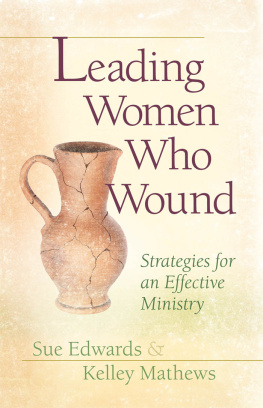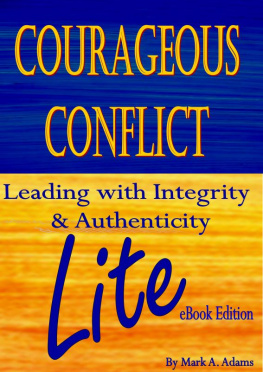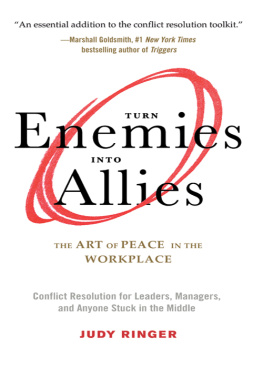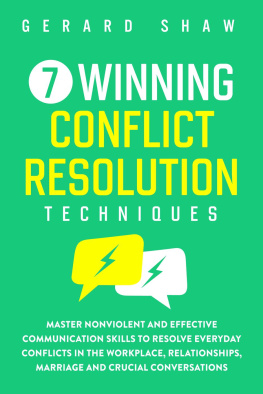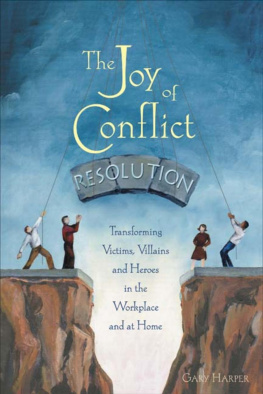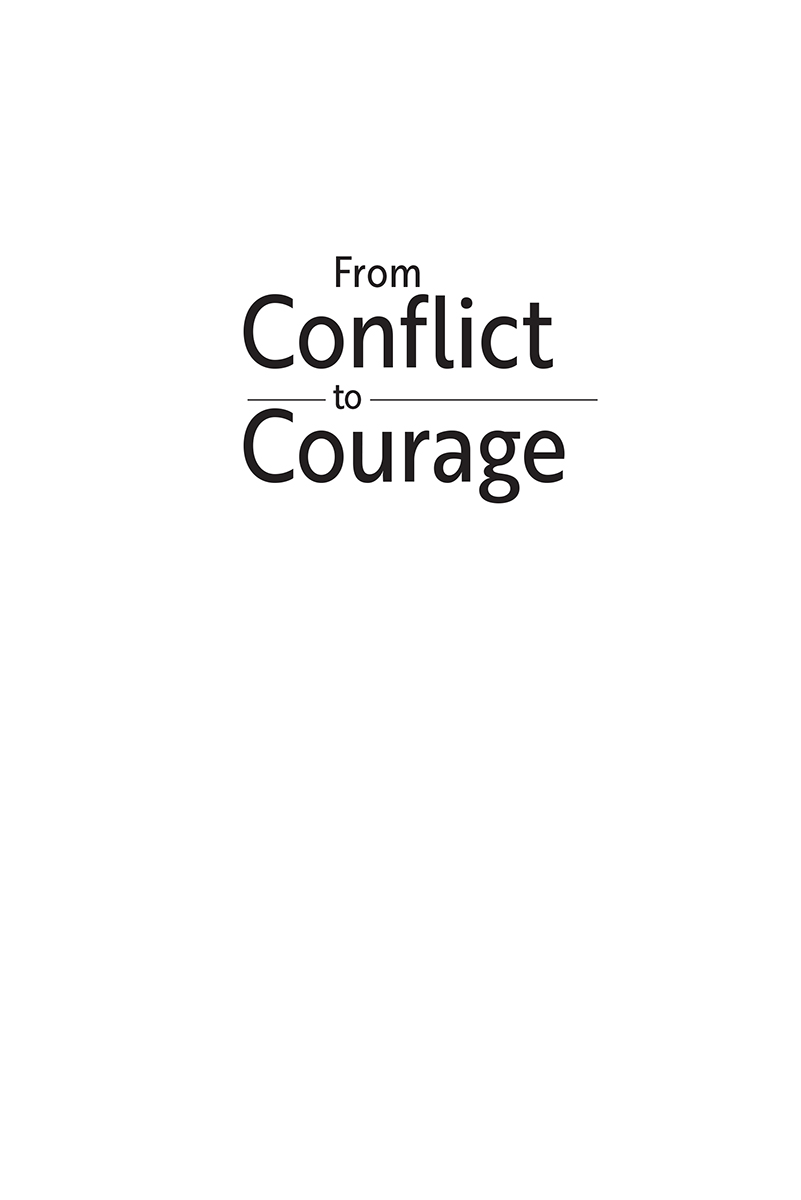Contents
Guide
Page List
From Conflict to Courage
Copyright 2022 by Marlene Chism
All rights reserved. No part of this publication may be reproduced, distributed, or transmitted in any form or by any means, including photocopying, recording, or other electronic or mechanical methods, without the prior written permission of the publisher, except in the case of brief quotations embodied in critical reviews and certain other noncommercial uses permitted by copyright law. For permission requests, write to the publisher, addressed Attention: Permissions Coordinator, at the address below.

| Berrett-Koehler Publishers, Inc. 1333 Broadway, Suite 1000 Oakland, CA 94612-1921 Tel: (510) 817-2277, Fax: (510) 817-2278 www.bkconnection.com |
Ordering information for print editions
Quantity sales. Special discounts are available on quantity purchases by corporations, associations, and others. For details, contact the Special Sales Department at the Berrett-Koehler address above.
Individual sales. Berrett-Koehler publications are available through most bookstores. They can also be ordered directly from Berrett-Koehler: Tel: (800) 929-2929; Fax: (802) 864-7626; www.bkconnection.com
Orders for college textbook/course adoption use. Please contact Berrett-Koehler: Tel: (800) 929-2929; Fax: (802) 864-7626.
Distributed to the U.S. trade and internationally by Penguin Random House Publisher Services.
Berrett-Koehler and the BK logo are registered trademarks of Berrett-Koehler Publishers, Inc.
First Edition
Paperback print edition ISBN 978-1-5230-0072-2
PDF e-book ISBN 978-1-5230-0073-9
IDPF e-book ISBN 978-1-5230-0074-6
Digital audio ISBN 978-1-5230-0075-3
2022-1
Book producer: Happenstance Type-O-Rama
Text designer: Maureen Forys, Happenstance Type-O-Rama
Cover designer: Adam Johnson
Author photo: Kristy Perryman Photography
For my first teachers:
Mom and Dad
Contents
Leaders have an opportunity to be a channel for chaos or a catalyst for clarity.
Skills development that doesnt lead to embodiment is just a notch above entertainment.
The story thats been resolved no longer needs to be told.
Leadership identity is about how you see yourself, and leadership clarity is about how you see the situation.
Think of blame as a shortcut for avoiding responsibility.
Our perceptions and interpretations create structures of knowing.
Disruptive people will continue to be disruptive as long as no one has the courage to confront them.
The answers will come through the conversation, not before the conversation.
When you find your choice, you find your power.
Preface
I used to think conflict was due to some difficult personality or situation, but then one day I started playing with an idea: the idea that there is no conflict unless theres an inner conflict. When youre disturbed, angry, emotional, or impatient, when youre thinking about what other people are doing wrong, or when youre dredging up the past and rehashing old grudges, youll have conflict even when no one else is physically in the room. I asked myself the question, Could it be that the first step to effectively managing conflict is to resolve inner conflict first? To be sure, you cant resolve inner conflict if you dont even know you have it, so I started paying attention to how inner conflict arises and grows in my own life. Im willing to share my challenges for the purpose of learning.
Inner conflict arises when I want something but I hesitate to ask for what I want, or when Im impatient but everything around me is moving slowly. Inner conflict grows when I believe every thought without challenging my narrative, or when I assume I know someones motives but dont have the courage to question their behaviors. Inner conflict deepens when I hold a grudge or continue to harbor past resentments. When I put off a conversation because I fear the other persons defensiveness, its only my inner conflict keeping me from moving forward; after all, the conversation hasnt even happened yet.
One of the most difficult aspects of leadership is managing conflict instead of avoiding it. My hope is that after reading this book, you will no longer avoid conflict but instead realize that conflict can be your greatest teacher and a catalyst for leadership growth.
Introduction
Conflict Is Not the Problem
Leaders have an opportunity to be a channel for chaos or a catalyst for clarity.
O ne of the toughest parts of your job as a leader is managing conflict. Youll have to initiate difficult conversations about performance with employees you care for, and youll have to speak about behavioral issues with those you wish would move on. The conflicts youll face on your leadership journey wont only be with employees. Having a title or positional power doesnt make conflict any easier; advancement requires you to become more conflict capable. Youll experience conflict with those in higher power, perhaps a board of directors, a top-level executive, a peer, a partner, a vendor, or a client. Youll have to make difficult decisions where you feel misaligned and uncertain, and youll feel inner conflict, that feeling when your values clash. Conflict can be seen as a problem that keeps you stuck, or conflict can be seen as a teacher that helps you grow.
Why I Wrote This Book
I wrote this book because the ideas in this book have helped me and thousands of other leaders, and I think the ideas, tips, techniques, and methods will help you. My philosophy is this: if Ive had a problem, it means Im not alone. It means millions of other people have the same problem or will have the same problem. Everything I now teach, speak, or write about is something I either have worked through or am working on.
Im not trying to be a guru. Its dangerous to put anyone on a pedestal or give someone else the responsibility for your decisions. I dont believe in gurus, but I believe in teachers. Teachers show up as authors, speakers, facilitators, thought leaders, professors, or experts.
Our teachers also show up as the boss we cant stand, the complaining coworker who drains our energy, the employee that wont engage, and the person who has a different political viewpoint. Teachers are all around us if we have the eyes to see. Im inviting you, as you read through this book, to see conflict as your teacher and me as the facilitator.
Over the last twenty years of working with other leaders, I observed that conflict that had escalated to creating a toxic work environment was due to one simple area of neglect: a conversation that should have happened but didnt. I saw avoidance of conflict at every level in almost every organization.



